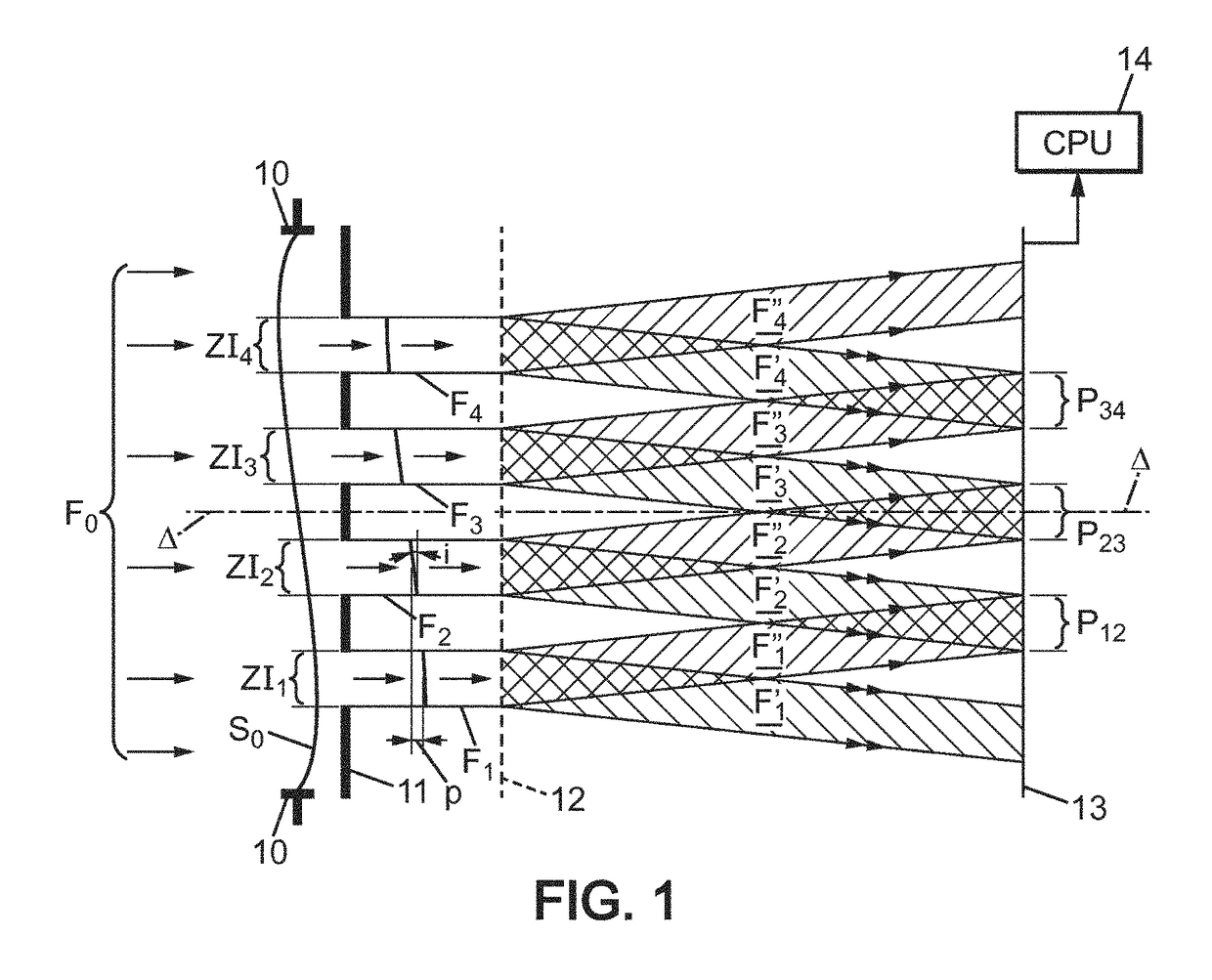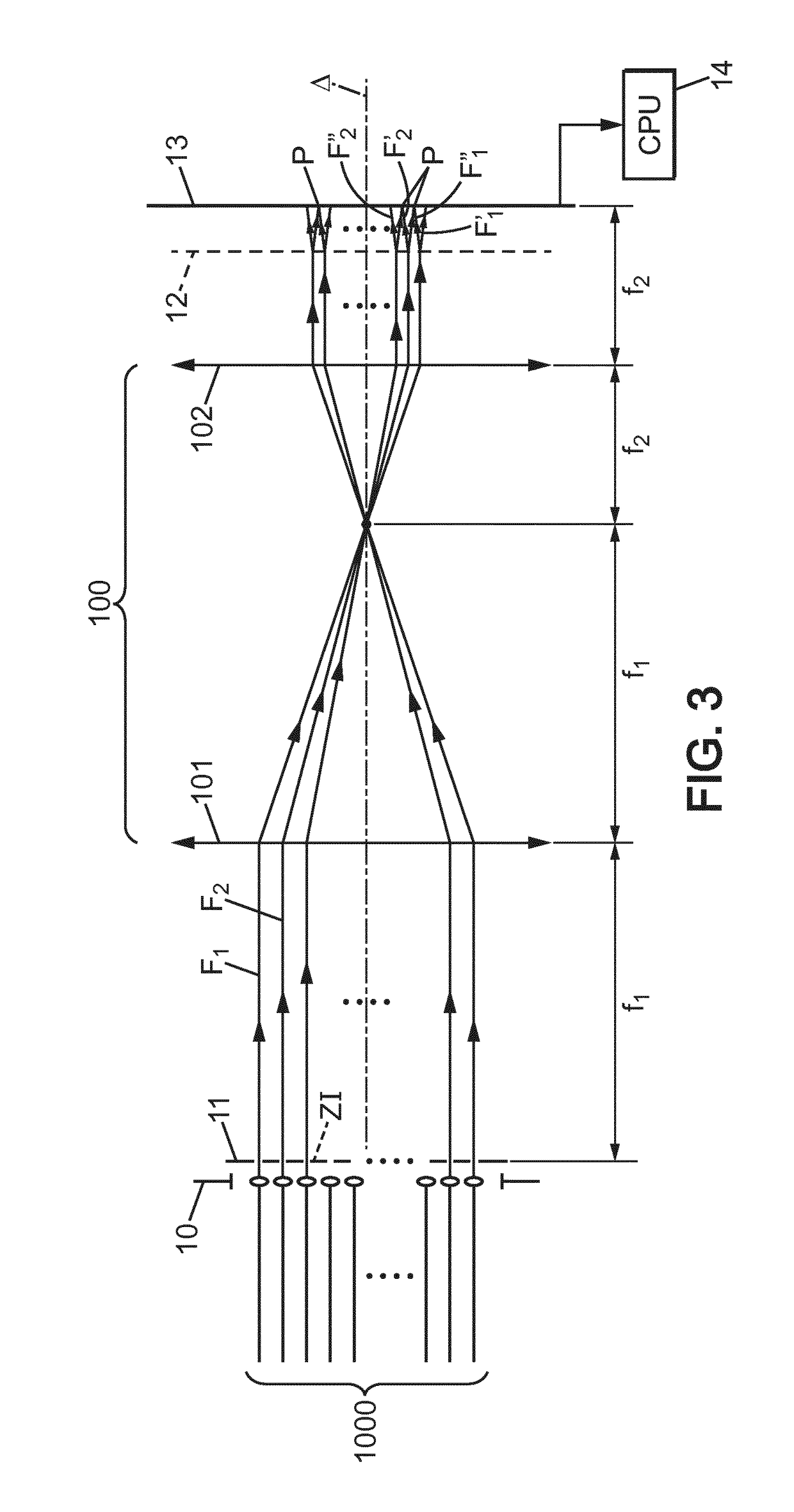Wavefront sensor and method for determining differences in piston and tilt existing between several light beams
a technology of wavefront sensor and light beam, which is applied in the direction of optical radiation measurement, instruments, measurement devices, etc., can solve the problem of difficult to determine the difference in piston and tilt from any one of the interferograms, and achieve the effect of simple implementation
- Summary
- Abstract
- Description
- Claims
- Application Information
AI Technical Summary
Benefits of technology
Problems solved by technology
Method used
Image
Examples
Embodiment Construction
[0040]In the interests of clarity, the dimensions of the different elements represented in the figures do not correspond either to actual dimensions or to actual dimensional relationships. Moreover, identical references that are given in different figures denote identical elements, or those having identical functions.
[0041]The references used in FIG. 1 have the following meanings:
[0042]Δ optical axis of the wavefront sensor
[0043]10 optical input of the wavefront sensor
[0044]11 mask with separate openings
[0045]12 diffraction grating
[0046]13 surface of an image detector
[0047]14 processing module, marked CPU
[0048]F0 initial light beam
[0049]F1, . . . , F4 selected beams within the initial beam F0
[0050]F′1, F″1 sub-beams originating from the beam F1
[0051]F′2 F″2 sub-beams originating from the beam F2
[0052]F′3, F″3 sub-beams originating from the beam F3
[0053]F′4, F″3 sub-beams originating from the beam F2
[0054]S0 initial wavefront
[0055]ZI1, . . . , ZI4 zones of interest
[0056]P12, P23...
PUM
 Login to View More
Login to View More Abstract
Description
Claims
Application Information
 Login to View More
Login to View More - R&D
- Intellectual Property
- Life Sciences
- Materials
- Tech Scout
- Unparalleled Data Quality
- Higher Quality Content
- 60% Fewer Hallucinations
Browse by: Latest US Patents, China's latest patents, Technical Efficacy Thesaurus, Application Domain, Technology Topic, Popular Technical Reports.
© 2025 PatSnap. All rights reserved.Legal|Privacy policy|Modern Slavery Act Transparency Statement|Sitemap|About US| Contact US: help@patsnap.com



